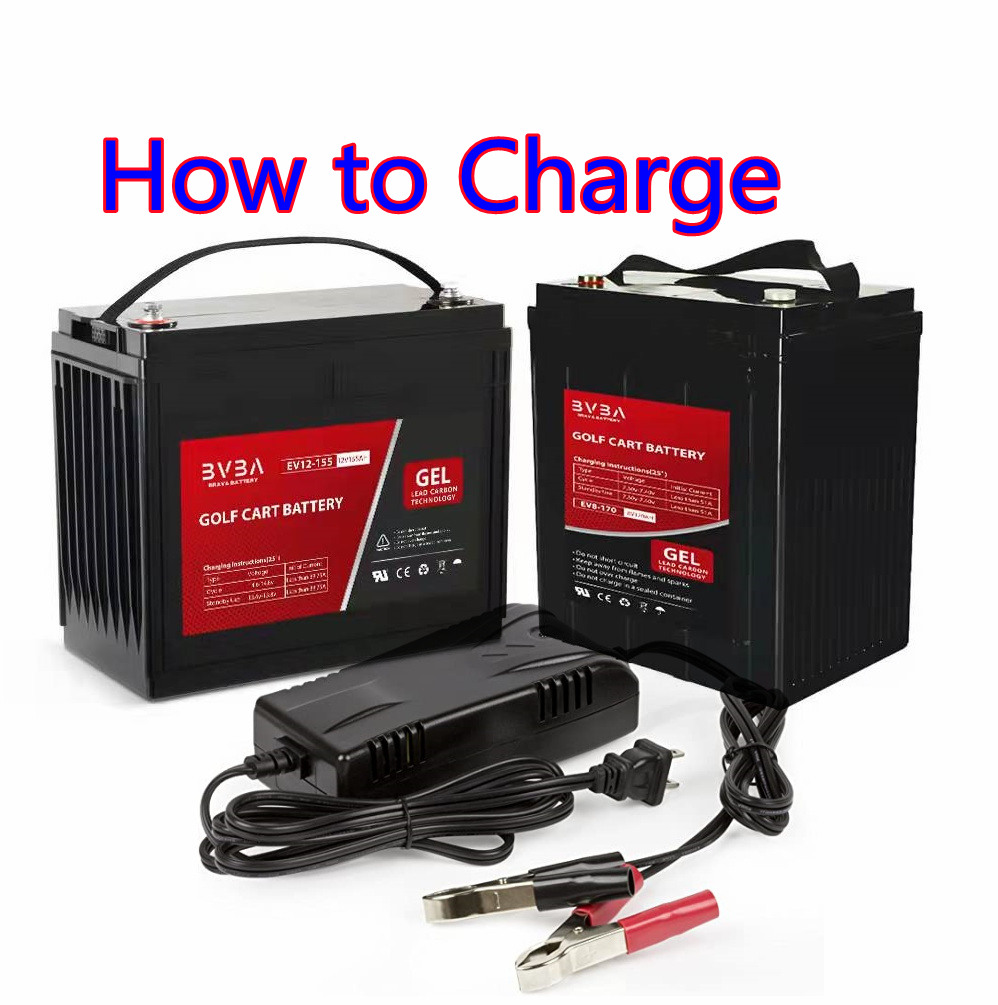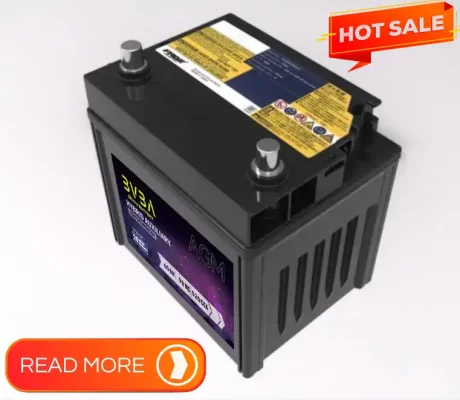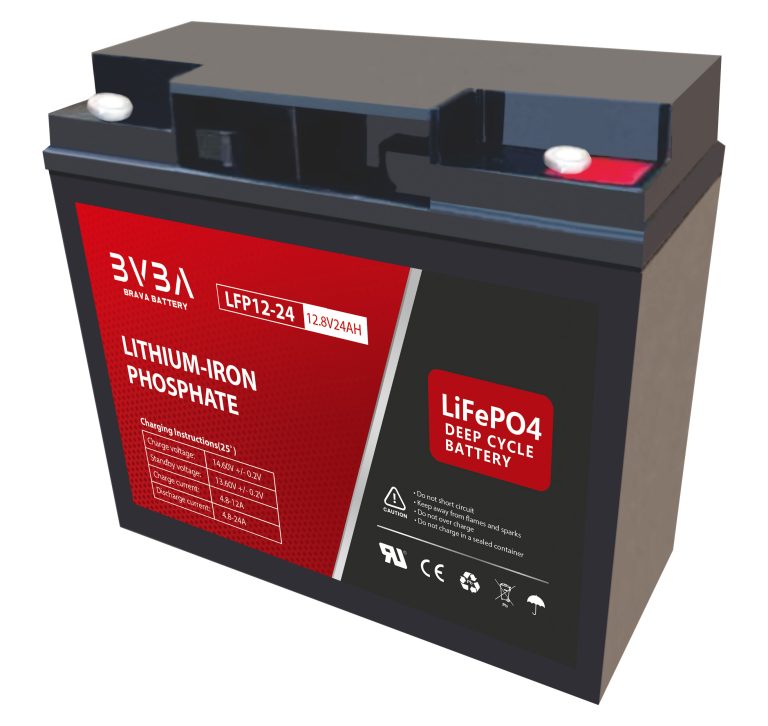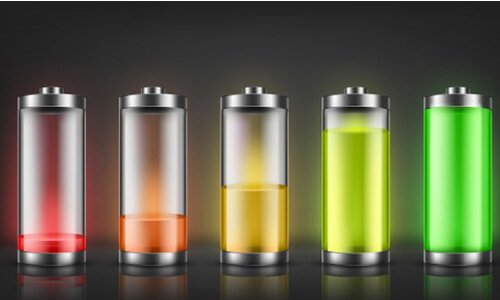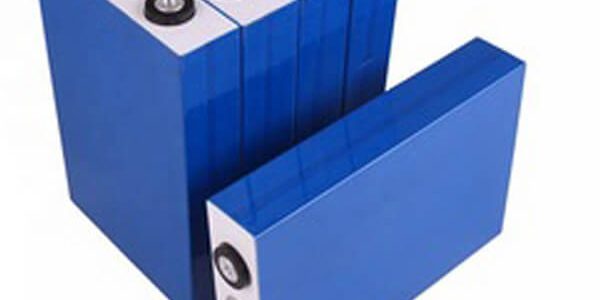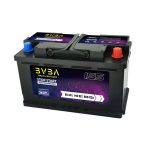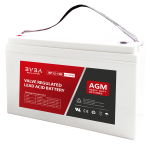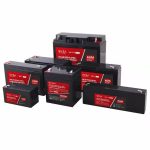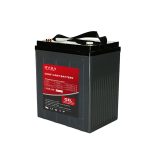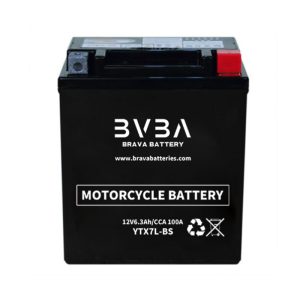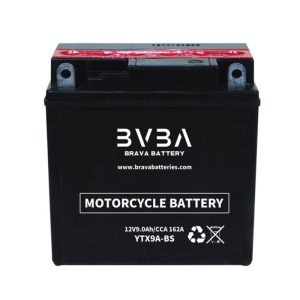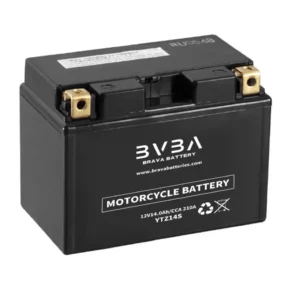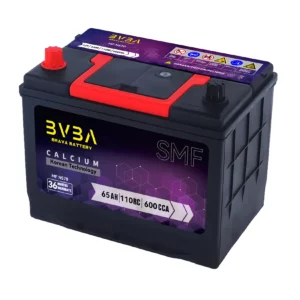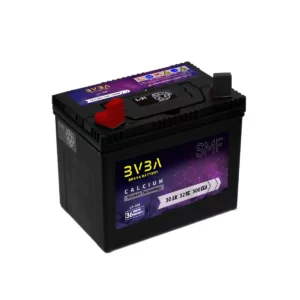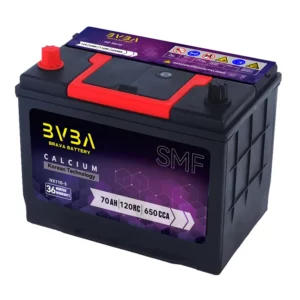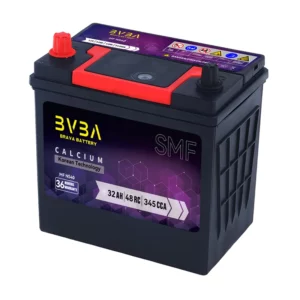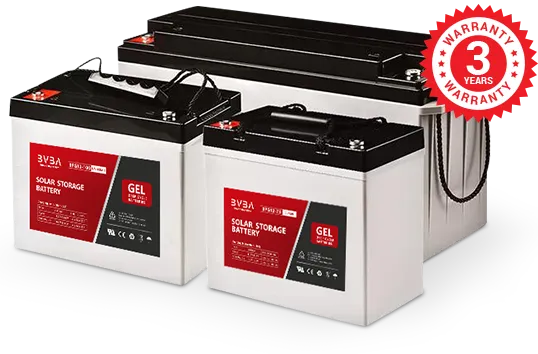Charging AGM Batteries Properly To Maintain Battery Health
Charging AGM batteries properly is a very important step in ensuring a long service life. AGM batteries are used for a wide range of applications. For example, they are used in powering your electronic devices, providing backup power to your UPS, powering your car and storing renewable energy for future use. In order to ensure your AGM battery lives for years, it is critical that it is charged properly. If you charge your AGM batteries in the wrong way, they will face premature aging. Meaning, your batteries will die our much faster than they are designed to. In fact, improperly charging your AGM battery may cause the cells to preheat, damaging the battery and causing it to die within a matter of hours. In order to make the battery live for years, follow the 4 tips below for charging your AGM battery:
1. Buy The Recommended Charger
Battery chargers are not designed to as a one-size fit all. Some chargers are designed to provide small amounts of power, while others are designed to provide a lot of power. Generally speaking, the larger the battery, the bigger the charger you’ll need. The opposite is also true. The smaller a battery is, the smaller charger you’ll need. When we’re talking about the “size” of the battery or the “size” of the charger, we’re not talking about the physical dimensions. In fact, we are talking about capacity, which is annotated in amperes (Ah).
2. Understand How Charges Affect Different Batteries
Many people believe that charging AGM batteries is similar to charging their laptop battery, but of course this is not true. In fact, the batteries used in laptops are a completely different technology. Laptop batteries are lithium while AGM batteries are lead acid. For this reason, charging AGM batteries is different and requires special charging procedures. For example, lithium batteries may be partially charged for a while without significantly harming the batteries. Charging AGM batteries requires you to fully recharge the battery. In fact, you’re supposed to slightly over-charge the batteries to give them a “top up”. Smart AGM chargers does that all for you, so you don’t need to worry if you’ve got one of those. If you repeatedly only partially recharge an AGM battery, let’s say up to 70% every time, the battery may actually lose it’s ability to fully recharge to 100% in the long term. This means the AGM battery would only be able to recharge up to 70%.
3. Charge AGM Batteries In The Right Temperature
AGM batteries have a certain charge temperature range. This means if the temperature falls outside of this range, you should not be charging AGM batteries. For all types of lead acid batteries, you should avoid charging if the temperature raises above 40 degrees Celsius or 104 degrees Fahrenheit. Cold weather also affects charging AGM batteries. You should avoid charging your batteries if the temperature falls below 0 degrees Celsius or 32 degrees Fahrenheit. Ensuring the temperature is within the range of 0 and 40 degree Celsius is important while charging, in order to ensure the battery lives as long as it is designed to.
4. Don’t Worry If Battery Warms Up
Toward the end of charging AGM batteries, the cells may feel warm. This warmth is normal for lead acid batteries. In fact, you can still use the battery in your electronic devices while it’s warm. Please be careful and note that we are only referring to AGM batteries when claiming it’s fine to use them while they’re warm. This does not apply to small AA and AAA rechargeable batteries, which you may have picked up from your local grocery store. Furthermore, when referring to a warm AGM battery, we are not saying hot. If the battery is too hot, you definitely should not use it. However, if you place you hand on the battery and feel a bit of warmth, then it is normal. If you feel your AGM battery is getting too warm during the charging stage, you may give it a break by disconnecting the battery. Once the battery cools back down, then you can reconnect the charger to continue charging.
How to Charge batteries and When to Charge batteries?
Early batteries were reserved for commercial use only, such as telecommunications, signaling, portable lighting and war activities. Today, batteries have become a steady travel companion of the public at large to reach a friend, they allow working outside the confines of four walls, provide entertainment when time permits and enable personal transportation. Best of all, batteries help in missions when people are in need.
Folks are eager to learn more about this wonderful portable energy device and one of the most common questions asked is, “What can I do to prolong the life of my battery?” Table 1 addresses how to care for your batteries to meet their needs. Because of similarities within the different battery families, the table addresses the needs and wants of only the most common systems by keeping in mind that these desires extend to almost all batteries in use.
- Keep a battery at a moderate temperature. As food stays fresher when refrigerated, so also does cool temperature protect the battery by reducing internal corrosion, also known as parasitic reactions on the electrolyte and electrodes.
- Avoid deep cycling. Each cycle wears the battery down by a small amount and a partial discharge is better than a full discharge. When possible, only apply a full discharge to calibrate a smart battery and to prevent “memory” on nickel-based batteries. Li-ion is maintenance-free and the battery lasts longest when operating between 30 and 80 percent SoC.
- Avoid abuse. Like a machine that wears down quicker under strenuous work, so also is a battery stressed by harsh discharges and rapid charges. Use cells that are optimized for the power and energy requirements as per application and increase that pack size to minimize load-related stresses.
- Avoid ultra-fast charge. Charge Li-ion Energy Cells at less than 1C (below rated Ah); Power Cells are more rugged and can be charged and discharged at a higher rate. NiCd is the only battery that can be fast charged up to 70 percent SoC without adverse side-effects.
- Store Li-ion at partial charge in a cool place. The worst combination is high voltage and elevated temperature. Store Li-ion at approximately 50 percent SoC.
| Frequently asked question |
Lead acid (Sealed, flooded) |
Nickel-based (NiCd and NiMH) |
Lithium-ion (Li-ion, polymer) |
| How should I prepare a new battery? | Battery comes fully charged. Apply a topping* charge. | Charge 14–16h. Priming may be needed to format | Apply a topping charge before use. No priming needed |
| Can I damage a battery with incorrect use? |
Always store battery fully charged. | Battery is robust. New pack will improve with use. | Keep partially charged. Low charge can turn off protection circuit |
| Do I need to apply a full charge? | Fully charge every few weeks or months. Continuous low charge causes sulfation. | Partial charge is fine | Partial charge better than a full charge |
| Can I disrupt the charge cycle? | Partial charge causes no harm when applying periodic fully saturated charges. | Repeat charges can cause heat buildup | Partial charge causes no harm |
| Should I use up all battery energy before charging? |
No, deep discharge wears battery down. Charge more often | Apply scheduled discharges only to prevent memory | Deep discharge wears the battery down |
| Do I have to worry about “memory”? | No, there is no memory | Discharge NiCd every 1–3 months | No memory |
| How do I calibrate a “smart” battery? | Not applicable | Apply discharge/charge when the fuel gauge gets inaccurate. Repeat every 1–3 months | |
| Can I charge with the device on? | Avoid load if possible | Parasitic load can alter full-charge detection and overcharge battery or cause mini-cycles | |
| Do I remove the battery when full? | Charger switches to float charge | Remove after a few days in charger | Not necessary; charger turns off |
| How do I store my battery? |
Keep cells above 2.10V; topping-charge* every 6 months. |
Store in cool place; can be stored fully discharged | Store in cool place partially charged |
| Does battery heat up on charge? | Gets lukewarm towards end of charge | Warm but must cool down when ready | Must stay cool or slightly warm |
| How do I charge when cold? | Slow charge (0.1): 0–45°C (32–113°F) Fast charge (0.5–1C): 5–45°C (41–113°F) |
Do not charge below freezing |
|
| Can I charge at hot temperatures? | Lower threshold by 3mV/°C above 25°C | Battery will not fully charge when hot | Do not charge above 50°C (122°F) |
| What should I know about chargers? | Charger should float at 2.25–2.30V/cell when ready | Battery should not get too hot and should include temp sensor | Battery must stay cool and no trickle charge when ready |
Table 1: Best charging methods
Strenuous demands cannot always be prevented.
* Topping charge is applied on a battery that is in service or storage to maintain full charge and to prevent sulfation on lead acid batteries.
How to select an AGM Batteries Charger (3 steps)
Step 1: determine your battery type
There are a number of battery types such as AGM, VRLA, wet cell and gel. You first need to check that you are actually working with an AGM battery. More importantly, you need to ensure that you are not working with a gel battery. This is because all of the batteries mentioned above, except for gel batteries, can be charged with an AGM battery charger. Gel batteries are more sensitive to charging and require specially designed chargers. For this reason, gel batteries should not be charged with an AGM battery charger. It is not that an AGM battery charger cannot charge a gel battery, because technically it can, but it is not recommended because it will harm the gel battery in the long-run. After confirming that you are dealing with an AGM battery and not a gel battery, move on to the next step.
Step 2: determine your battery size
We don’t mean the physical size of the battery, as in the dimensions, but rather how many amp hours your battery stores. For example, a typical solar AGM battery is 100 amp hours, so a 10 amp AGM battery charger would take about 6 hours to completely charge it, assuming it is 50% discharged. Alternatively, you can double the amp of the charger from 10 amp to 20 amp, cutting the charging time in half to only 3 hours. How did we calculate the time it takes to charge the battery? Well, it’s very simple actually. Take the amp hour rating of your AGM battery and divide it by the charger’s rating (amps), and then add about 15% for the additional time to entirely top off the battery.
If you want an AGM battery charger that can quickly recharge your battery, you should look for a charger with more amps. If you are not in a rush, you should select a battery charger with less amps. In fact, charging a battery with less amps will help you maintain the health of your battery in the long term. Furthermore, an AGM battery charger with less amps will surely cost you less money, so that is another benefit of using a smaller charger.
Step 3: determine the desired charging performance
In this final step, you will need to determine the level of charging performance you have in mind. For example, if you just need a charger to keep your motorcycle, boat, classic car or aircraft charged during the off season, then a smaller charger with less amps is fine. Charging a battery with a smaller charger would require more time, but that shouldn’t be a problem since you won’t need to use your off-season battery for a while. However, if you are looking for a charger that can quickly restore a battery in a vehicle you regularly use, such a wheel chair, then a more powerful charger with higher amps would be required. It’s probably safe to assume that nobody wants to wait all day for their wheelchair battery to recharge.
After reading the three steps, you should now be able to determine how to find the best AGM battery charger. Let’s quickly summarize the three steps:
- Determine the type of your battery in order to find out what type of charger is required.
- Determine the size of your battery to determine the size of the charger required.
- Determine how fast you want to charge your battery to find the right charger for you.
Now that you’re ready to buy an AGM battery charger, let’s see where you can buy one.
AGM Batteries Related Products:
Related Products Application:
AGM Batteries Related Posts:
Tag in this article: #AGM Batteries
Tips: more detail information, for acid battery

